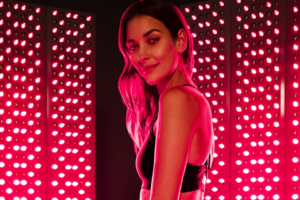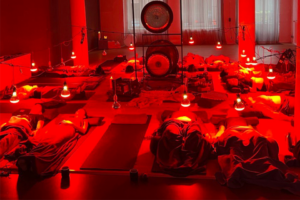Red Light Therapy and Cancer: Unveiling the Truth Behind the Controversy

Red light therapy (RLT) has gained significant attention in recent years for its potential health benefits. However, concerns have arisen about its safety, particularly regarding cancer. This article delves into the relationship between red light therapy and cancer, exploring whether RLT can cause, treat, or prevent various types of cancer. We’ll examine the science, benefits, and potential risks to provide you with a comprehensive understanding of this innovative treatment.
Table of Contents
What is Red Light Therapy and How Does It Work?
Red light therapy, also known as photobiomodulation or low-level laser therapy (LLLT), uses specific wavelengths of red and near-infrared light to stimulate cellular processes. This non-invasive treatment involves exposing the body to low levels of red or near-infrared light, typically in the range of 630-850 nm.The science behind red light therapy is based on the principle that certain wavelengths of light can penetrate the skin and be absorbed by cells, particularly the mitochondria. This absorption is thought to enhance cellular energy production and promote various biological processes, including:
- Increased collagen production
- Improved circulation
- Reduced inflammation
- Enhanced tissue repair
Learn more about the science behind red light therapy
Can Red Light Therapy Cause Cancer?
One of the most pressing concerns surrounding red light therapy is whether it can cause cancer. It’s essential to understand that RLT uses non-ionizing radiation, which is fundamentally different from the ionizing radiation known to cause cancer.Current research suggests that red light therapy does not cause cancer. In fact, studies have shown that:
- RLT does not damage DNA or cellular structures
- The wavelengths used in red light therapy are not associated with cancer development
- Unlike UV light, which can cause skin cancer, red and near-infrared light are considered safe
However, it’s crucial to note that more long-term studies are needed to fully understand the effects of prolonged exposure to red light therapy.
Is Red Light Therapy Safe for Cancer Patients?
For cancer patients considering red light therapy, safety is paramount. While RLT is generally considered safe, cancer patients should always consult with their oncologist before starting any new treatment.Some important points to consider:
- RLT may help alleviate certain side effects of cancer treatment, such as pain and inflammation
- Certain types of photodynamic therapy, which combines light with photosensitizing agents, are used in cancer treatment
- There’s no evidence that red light therapy interferes with standard cancer treatments
Explore red light therapy devices for home use
Can Red Light Therapy Help Prevent Skin Cancer?
While red light therapy is not a proven method for preventing skin cancer, some research suggests it could have protective effects on skin health. Here’s what we know:
- RLT may help repair sun-damaged skin
- It can stimulate collagen production, potentially improving skin resilience
- Some studies indicate that red light therapy could help prevent skin cancer by promoting DNA repair
However, it’s crucial to emphasize that RLT should not replace traditional sun protection methods like sunscreen and protective clothing.
Red Light Therapy and Cancer Treatment: What Does the Science Say?
The potential of red light therapy in cancer treatment is an exciting area of research. While RLT is not a standalone cancer treatment, studies have shown promising results in certain areas:
- Alleviating side effects: RLT may help reduce pain, inflammation, and skin reactions associated with cancer treatments.
- Enhancing other therapies: Some research suggests that RLT could make cancer cells more susceptible to certain treatments.
- Potential anti-tumor effects: Early studies indicate that specific wavelengths of light might have direct anti-tumor properties, though more research is needed.
Discover full-body red light therapy devices
How Does Red Light Therapy Compare to Other Cancer Treatments?
Red light therapy is not a primary cancer treatment and should not be compared directly to established methods like chemotherapy, radiation, or surgery. Instead, RLT is often considered a complementary therapy that may:
- Enhance the effectiveness of traditional treatments
- Reduce side effects and improve quality of life
- Promote overall health and wellness during cancer treatment
It’s essential to view RLT as a potential supportive therapy rather than a replacement for conventional cancer treatments.
Are There Any Risks or Side Effects of Red Light Therapy for Cancer Patients?
While red light therapy is generally considered safe, cancer patients should be aware of potential risks and side effects:
- Eye sensitivity: Proper eye protection is crucial during RLT sessions
- Skin irritation: Some individuals may experience temporary redness or mild irritation
- Photosensitivity: Certain medications can make skin more sensitive to light
Always consult with a healthcare professional before starting red light therapy, especially if you have active cancer or are undergoing treatment.Learn about red light therapy safety and side effects
How to Safely Incorporate Red Light Therapy into Cancer Care
If you’re considering red light therapy as part of your cancer care, follow these guidelines:
- Consult your oncologist: Always get approval from your cancer care team before starting RLT
- Choose reputable providers: If using professional services, ensure they have experience working with cancer patients
- Start slowly: Begin with short, low-intensity sessions and gradually increase as tolerated
- Monitor your response: Keep track of any changes in symptoms or side effects
- Maintain regular cancer treatments: RLT should complement, not replace, your prescribed cancer care
Explore at-home red light therapy options

The Future of Red Light Therapy in Cancer Research
The field of red light therapy and its potential applications in cancer care is rapidly evolving. Ongoing research is exploring:
- Optimal wavelengths and dosages for specific cancer types
- Combination therapies using RLT with other treatments
- Long-term effects of red light therapy on cancer prevention and recurrence
As more studies are conducted, we’ll gain a clearer understanding of how red light therapy can be safely and effectively integrated into comprehensive cancer care.
Conclusion: Balancing Hope and Caution
Red light therapy offers promising potential in the realm of cancer care, from alleviating treatment side effects to possibly enhancing the efficacy of conventional therapies. However, it’s crucial to approach RLT with a balanced perspective:
- RLT is not a cure for cancer and should not replace standard treatments
- Current evidence suggests that red light therapy does not cause cancer
- More research is needed to fully understand the long-term effects and optimal use of RLT in cancer care
As with any health-related decision, it’s essential to consult with healthcare professionals and make informed choices based on scientific evidence and individual circumstances.Key takeaways:
- Red light therapy uses specific wavelengths of light to stimulate cellular processes
- Current research suggests RLT does not cause cancer
- RLT may help alleviate side effects of cancer treatment and enhance overall well-being
- More studies are needed to fully understand the potential of RLT in cancer prevention and treatment
- Always consult with healthcare professionals before incorporating RLT into cancer care
Explore a wide range of red light therapy devices
A modern red light therapy device for home useBy staying informed and working closely with healthcare providers, patients can make the best decisions about incorporating red light therapy into their cancer care journey.






